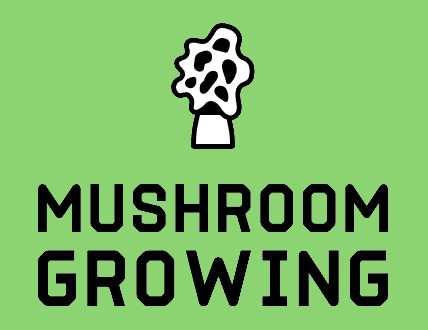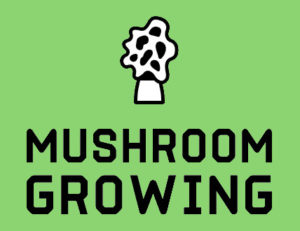What is Maitake Mushroom?
Grifola frondosa is the scientific name for the Maitake. This one-of-a-kind fungus has a variety of names, including God's mushroom, Hen of the woods, Sheepshead, ram's head, and sheep's head. It is known as 'Dong Chong Xia Cao' and 'Maitake' in China.
The Maitake mushroom can be found on oaks, chestnut trees, elm trees, and some other hardwoods.
Maitake appears both at the base of dying or dead trees and on living trees, attached to their trunks and branches by very small root-like structures called rhizomorphs.
Their natural habitat is in Asia but they can also be found in forests in North America and Europe.
Maitake mushrooms are widely appreciated in culinary circles for their versatility, earthy, musky taste, aroma, and delicate, unique texture (nutty flavour and crunchy texture).
Health benefits of Maitake Mushrooms
The Maitake mushroom has many important benefits due to its high antioxidant content, high amounts of fibre, B vitamins, and minerals such as copper, selenium, potassium, phosphorous, and zinc.
Their benefits can be broken into two groups; Preventative and Therapeutic Benefits.
Preventive benefits
The Maitake has anti-aging, cancer prevention (anti-tumour), cholesterol-lowering, blood sugar management, and may assist with weight reduction abilities. They also help the immune system, have antiviral properties, and benefit cardiovascular health.
Therapeutic Benefits of Maitake Mushrooms
There's a lot of ongoing study being done on the efficiency of Maitake mushrooms in combating disease, bacteria, and viruses such as HIV, Hepatitis C, and some cancers.
The biggest reason for this is because the Maitake mushroom contains D-fraction which has been known to kill off any bad cells or abnormal ones.
It has been reported that the Maitake mushroom helps build up the immune system, stimulates white blood cells, and is a natural antibiotic.
Maitake mushrooms also help in lowering blood pressure, due to a present compound called eritadenine.
Growing Maitake Mushrooms
Maitake mushrooms can be grown either indoors or outdoors.
There are various techniques of growing maitake mushrooms:
- From Logs
- From Cuttings
- Sawdust Spawn
- Growing Kits
How to grow Maitake Mushrooms from Logs
Maitake mushrooms like to grow around hardwood trees that are 15-25 years old and live for 40-110 years.
In order to grow Maitake from logs, these are the steps you need to follow:
- Cut down a healthy living tree - either deciduous or coniferous.
- The diameter of your log should be 3 inches thick and cut them as long as they can be without causing damage or breaking any branches off, peeling bark etc.
- The log should be cut into 3 feet sections and then you should drill holes into each section. The diameter of the holes should be slightly larger than the size of your dowel spawn (around 5/16 inch)
- Insert your dowel through all the drilled holes until it comes out on the other end. Make sure the dowel is at least 2 inches below the bark on all sides of your log.
- You should then seal up all holes with either wax or some kind of paraffin-based product like beeswax or polish. You can also use polyurethane for this purpose as well, but make sure it's non-toxic.
- After sealing the holes, you should then drill another hole in the bottom of your log. The diameter of this hole should be slightly larger than 3/16 inches. This will act as an entry point for moisture and give the dowels a place to exit out (from anywhere between 4 weeks to 6 months)
- Once all the drilling is done, you should then insert your dowels in the designated holes. The dowel can be inserted at any point in the log, but make sure to space them out evenly.
- The last thing you need to do when inserting your dowels into your log is to simply cover up all the exposed ends of each dowel with melted wax. And if you are using polyurethane, make sure it is non-toxic. Once all your dowels have been inserted into your log, just wrap a sheet of plastic around it and seal the bottom with some tape.
- After this is done, you should simply leave the log on a shelf somewhere in a room where it gets enough light throughout the day. And once mushrooms begin to grow, make sure they are exposed to natural light for at least 8-10 hours a day.
How to Grow Maitake Mushrooms from Cuttings
Growing maitake mushrooms from cuttings are very easy and it will yield much faster results than growing them from logs. To start off, you should find some healthy maitake mushrooms that are still fresh, clean, and white. You want to pick ones that are at least 3 inches across the cap and preferably still have their stem attached.
- You should then cut off a healthy-looking stem with no damaged parts, leaving about 1-2 inches of it intact.
- Once you have your cutting, make sure you rinse it off in cool water for about 15 minutes.
- Remove the bottom part of your stem by cutting it off at its connection point to the rest of the mushroom. You should make sure that you are leaving about 1-2 inches of it intact again, but this time cut straight through instead of making a V shape.
- After doing this, you should place your clean maitake stem in a glass of water overnight
- The next day, you should take a growing tray and fill it with the fibre growing substrate you have chosen. Make sure that whatever substrate you use is hydrated to its maximum capacity before inserting your stem into it. The easiest way to do this is to simply submerge your growing tray in water for about 1 hour and then let it drain.
- Once your substrate is ready, make a small hole in the centre and insert your maitake stem until it comes in contact with the substrate.
- You should then cover up the growing tray and leave it undisturbed for about 4-6 weeks (more or less depending on what kind of substrate you use and how thick your cutting is).
- Once you notice that your stem has grown white mycelium at its base, it means that the mycelium has rooted itself and it's time to transplant your entire growing tray into a larger container. Once this is done, you will notice the mushroom starting to fruit within 2-6 weeks.
How to grow Maitake mushrooms from Growing Kit
Growing kits are an ideal way for people who are not up to do all the work of having to cut down a tree, etc.
To use the kit you will need to follow these steps:
- Bury it in your yard making sure that the growing bag is above ground level. Make sure there's no rocks or other sharp objects underneath the kit.
- You should then water the kit every day with a hose for about 3 weeks. After this time has passed, you can stop watering but make sure it rains at least once every week or two
- Around 4-5 months later, your Maitake will start to grow and are ready for harvesting.
- After you have your Maitake mushrooms, they will need to be dried before storing them in a bag or any container. You can either dry them out in the sun or do it indoors by using a dehydrator. If you choose to use the sun to dry them out, make sure not to leave them out for longer than a day.
- After the harvesting is done, you can start growing your mushrooms again by following these steps:
- Replant your Maitake mushroom into new areas. You can do this process every 2-3 years or until you exhaust the trees.
- If you choose to replant your Maitake into the same area, you should wait at least 2 years before doing so again.
How to grow Maitake mushrooms from sawdust spawn
- It's a very similar method to the dowel spawn method but instead of using dowels you will be using small pellets of compressed hardwood sawdust and colonized with mushroom mycelium or a mixture of both.
- As a result, this makes it a great and easy solution for the home cultivator.
- The steps to follow when growing mushrooms from sawdust spawn:
- A substrate must first be made using either hardwood chips or sawdust. The materials used in making this substrate must be sterilized before mixing them together
- For every 0.75 lbs of the substrate, you will need 1cup of spawn. While mixing the substrate and spawn together, you should make sure to mix thoroughly
- Now it's time to load your substrate into bags or trays for fruiting. The recommended size of the bag or tray is 6 ½ by 4 inches. Each tray can hold up to 15 lbs of substrate
- After filling your trays with the substrate all you have to do now is close them tightly and pasteurize your substrate. Pasteurizing the substrate kills any lurking pests and also prevents any contaminants from entering into your fruiting substrate while allowing proper airflow for excellent results.
- After finishing the pasteurization process, place your trays or bags in a cleanroom gown backyard.
Harvesting
Maitake mushrooms grow rapidly and can reach a height of 3-5 centimetres after a month. After two months, the fungus may be harvested for personal use or sold.
Storing Maitake Mushrooms
Maitake mushrooms are best refrigerated in an airtight container. Airtight containers include plastic bags or Tupperware type storage containers. You should also keep them away from strong-smelling foods, such as garlic and onions to avoid transferring their odour onto the mushrooms.
Freeze the Maitake mushrooms but should only be used after dehydrating first and sealing the mushroom in a moisture-free container such as a freezer bag.
Conclusion
Growing Maitake mushrooms is not very difficult, but it requires patience and time. Choose the most suitable method and wait patiently. Over time, you'll have adequate fresh Maitake mushrooms for your home.
Have you ever tried growing Maitake mushrooms before? What was your experience like?
Tell us of your experience in the comments!

